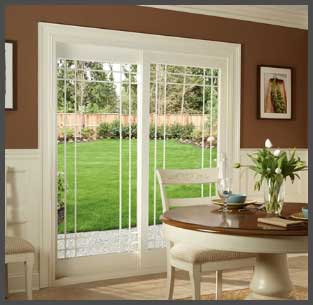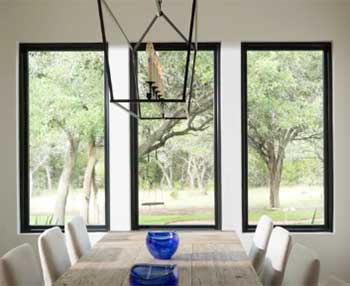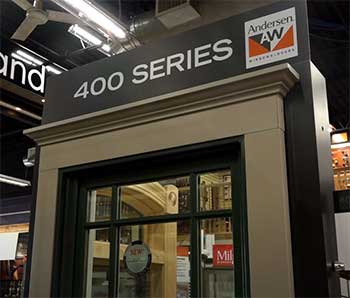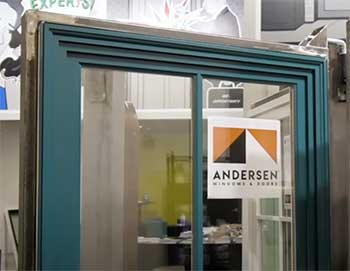If you’re in the market for new windows, two big names you’ll likely encounter are Preservation and Andersen. Both companies have been around for decades and offer a wide selection of high-performance windows to choose from.
But how do you decide which is the better option for your home and budget?
There are several factors to weigh when comparing Preservation and Andersen. In this comprehensive guide, we’ll explore the key differences between these two brands and provide an unbiased look at the pros and cons of each.
Read on to learn which company offers the features, warranties, cost savings, and overall value you need from new windows.
A Brief Comparison Table
| Feature | Preservation | Andersen |
| Frame Material | Vinyl | Fibrex Composite, Vinyl, Wood |
| Price Point | Budget-friendly, lower cost | Midrange to premium pricing |
| Warranty | Limited lifetime | Limited lifetime on Fibrex and Vinyl, 10 years on glass |
| Energy Efficiency | Very good, standard low-E and argon fill | Excellent, advanced low-E4 and SmartSun glass |
| Style Options | All standard styles, good customization | Very extensive style and design options |
| Aesthetics | Fair, plastic-like appearance | Excellent, wood-like composite Fibrex |
| Durability | Good, standard vinyl life expectancy | Excellent, Fibrex lasts longer than vinyl |
| Maintenance | Easy, occasional washing | Easy, occasional washing |
| Reputation | Lesser known, shorter history | Well-known with longstanding reputation |
Overview of Preservation Windows
Founded in 1992, Preservation Windows is a division of Windsor Windows & Doors, an established manufacturing company that dates back to the 1950s. They offer a variety of vinyl replacement windows ideal for homeowners looking for energy efficiency, durability, and affordability.
Here are some quick facts about Preservation Windows:

- Based in Iowa, products made in the USA
- Wide range of window styles and customization options
- Vinyl frame construction with fusion-welded corners
- Double hung, sliding, casement, awning, picture, bay, bow, garden styles
- Glass options include low-E, triple pane, obscure, tempered
- Limited lifetime warranty on vinyl and hardware
- Available in white or beige
Overall, Preservation is positioned as a midrange vinyl window brand.
They aren’t the cheapest on the market, but still offer competitive pricing while emphasizing quality construction and long-term performance.
Overview of Andersen Windows
Founded in 1903, Andersen is one of the oldest and most recognizable window brands in the industry. Based in Minnesota, Andersen offers wood, vinyl, fiberglass, and composite windows targeting the midrange to premium price points.
Here are some quick facts about Andersen Windows:

- Renowned brand with long history in windows and doors
- Variety of window styles and customization options
- Multiple frame materials: Fibrex (composite), vinyl, wood
- Double hung, sliding, casement, awning, bay, bow, specialty styles
- Glass options include low-E, triple pane, obscure, tempered, patterned
- Limited lifetime warranties on Fibrex & vinyl; 10 years on glass
- Wide range of exterior color options
Andersen is known for higher quality materials and construction techniques that enhance aesthetics and durability. Their Fibrex composite frames are touted as providing the best of both worlds: durability of vinyl and beauty of wood.
Comparing Benefits & Features
Now that we’ve introduced both brands, let’s take a closer look at how specific benefits and features compare:
Energy Efficiency
One of the biggest considerations for today’s homeowners is energy efficiency. Replacing old, inefficient windows with new ones can yield significant cost savings on heating and cooling.
Both Preservation and Andersen offer low-E glass, argon gas fill, and triple pane options to boost efficiency. Their U-Factor and Solar Heat Gain Coefficient (SHGC) ratings are quite comparable. Unique to Andersen is the High-PerformanceTM Low-E4® SmartSunTM glass that filters out 95% of harmful UV rays while letting sunlight shine through.
In multi-pane construction, Andersen windows feature their own Fibrex material versus vinyl for better insulation and resistance to temperature transfer. Overall, Andersen windows rate slightly higher on energy efficiency but both brands are good options for maximizing energy savings.
Materials & Durability
When it comes to materials and durability, there are some clear differences between vinyl, wood, and composite:
Preservation windows are made entirely from vinyl with fusion-welded corners. Vinyl is lightweight, insulating, and resilient against weather, rotting, insects, and corrosion. However, some consumers dislike the plasticky appearance of vinyl.
Andersen offers windows in three different materials:

- Fibrex – Composite material that combines the strength of wood fibers and vinyl polymers. Provides good insulation while offering realistic wood aesthetics. More durable than straight vinyl.
- Vinyl – Identical advantages to Preservation’s vinyl windows. Andersen’s vinyl frame construction tends to be a bit heavier duty.
- Wood – Beautiful and classic material, but requires periodic repainting and is not as durable or insulating as composite and vinyl. Andersen’s wood windows feature oak, maple, pine, or mahogany interior.
Most homeowners prefer Fibrex composite windows from Andersen for the best of both worlds: long-lasting, low-maintenance, and handsome traditional appearance.
Styles & Customization
You’ll find nearly identical style options with both brands: double hung, sliding, casement, awning, picture, bay, bow, garden, specialty windows, and more. Both also allow for custom sizing to perfectly fit your window openings.
Andersen offers a bit more variety in divided lite patterns and exterior finish colors if aesthetics are important. But Preservation provides ample options for most homeowners’ needs at a lower cost.
Warranties
It’s difficult to compare warranties as most manufacturers use similar language covering defects, materials, workmanship, and glass breakage. Preservation and Andersen both back their windows with limited lifetime warranties on vinyl, Fibrex, and hardware components. Andersen provides 10 years of coverage on glass while Preservation doesn’t specify glass coverage duration.
Rest assured any manufacturer defects or premature failure of windows, glass, or parts would be covered by both brands’ warranties. Specific lengths are less meaningful since most quality windows will last 20-30 years or longer with proper care.
Cost Comparison
There is no standardized pricing between various window manufacturers. Exact prices will vary by location and individual contractor rates. However, here are some general guidelines on cost differences:
- Preservation vinyl windows are typically 25-40% less expensive than comparative Andersen vinyl and Fibrex windows. This makes Preservation a great option for homeowners on tighter budgets.
- Andersen vinyl windows are moderately priced, approximately 15-25% higher than Preservation.
- Andersen Fibrex composite windows are priced at a premium, approximately 40-50% higher than Preservation. These appeal to homeowners who prioritize appearance, durability, and performance over cost.
There can be significant savings choosing Preservation over Andersen, but keep in mind you are getting vinyl versus composite. Value depends on your budget and needs. Quality-wise both are great options backed by reputable manufacturers.
Pros & Cons of Preservation Windows
Pros:
- Very affordable price point
- Quality vinyl construction
- Energy efficient components
- Various style and customization options
- Made in the USA
- Easy to clean and maintain
- Limited lifetime warranty
Cons:
- Not as attractive as wood or composite
- Less rigid vinyl frame may flex more
- Shorter company history than Andersen
- Some durability concerns long-term
Pros & Cons of Andersen Windows
Vinyl Line:
Pros:

- Stronger and more rigid vinyl frame
- Broad style and customization selections
- Very energy efficient components
- Low-maintenance inside and out
- Limited lifetime warranty
- Renowned company with long reputation
Cons:
- More expensive than Preservation
- Not as attractive as composite or wood
Fibrex Composite Line:
Pros:
- Beautiful wood-like appearance
- Excellent durability and insulation
- Highest energy efficiency ratings
- Resists rotting, swelling, and warping
- Limited lifetime warranty
- Superior performance and longevity
Cons:
- Most expensive option
- Fibrex material costs more to repair
- Not as affordable as vinyl
Which Brand Is The Better Choice?
For many homeowners, the decision between Preservation vs. Andersen windows comes down to vinyl affordability vs. composite performance. Let’s summarize the key differences:
Preservation windows provide very good quality at budget-friendly prices. If keeping costs down is priority number one, you can’t go wrong with Preservation. You’ll still get energy savings, custom options, and durable vinyl construction.
Andersen windows represent a step up in aesthetics, durability, rigidity, and warranty coverage. The Fibrex composite frames offer the best of both worlds, combining natural wood beauty with low-maintenance performance.
Andersen carries the highest upfront cost but adds more long-term value.
There is no universally “better” brand. Choose Preservation vinyl windows if your top concern is affordable pricing. Opt for Andersen Fibrex composite if you want superior materials and don’t mind paying a premium.
Use the pros and cons listed above to weigh what matters most for your replacement window project.
Frequently Asked Questions (FAQ)
Some other window brands comparable to Andersen include Pella, Marvin, Milgard, Simonton, and Jeld-Wen. They offer similar materials, styles, efficiency, warranties, and price points targeting the midrange to high-end window market.
According to various experts and consumer reports, some of today’s top window manufacturers include Andersen, Pella, Marvin, Milgard, Jeld-Wen, Simonton, Ply Gem, Atrium, and Okna. Products from these reputable brands will provide an excellent replacement window solution.
Fiberglass and composite window frames like Andersen’s Fibrex typically last 50+ years. Compared to 20-30 years for vinyl and 10-20 years for wood, fibrex combines long-term durability and low maintenance similar to vinyl with the beauty of wood windows.
It’s hard to say definitively who has the “best” window deals, as pricing fluctuates and varies by location. Three brands known for reasonable prices on quality replacement windows are Milgard, Simonton, and Ply Gem. Local window contractors also frequently run promotions and sales.
The Bottom Line
As you shop for replacement windows, carefully examine the materials, warranties, styles, energy-efficiency, and overall value offered by Preservation vs. Andersen. Vinyl windows provide affordability and function, while composite fibrex brings premium aesthetics, durability, and performance.
Whichever direction you decide, consult multiple window professionals in your area to get quotes and have your home’s windows properly measured. This will ensure you end up with the right windows for your needs and budget.
Investing in energy efficient new windows is one of the best ways to increase comfort and save on utility costs for years to come.
